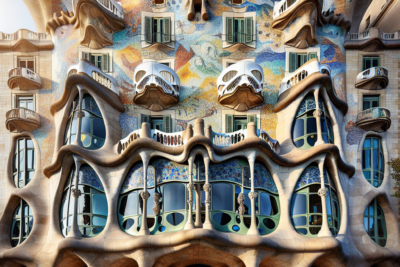
- Exploring the Architectural Marvel of Sagrada Familia in Barcelona
- The Spiritual Significance of Sagrada Familia: A Journey Through Faith
- A Guide to Visiting the Sagrada Familia: Tips and Tricks
- The History Behind Sagrada Familia: From Gaudí's Vision to Reality
- Understanding the Symbolism of Sagrada Familia's Design Elements
- Why Sagrada Familia is a UNESCO World Heritage Site and Must-Visit Destination
The Sagrada Familia, a masterpiece designed by the renowned architect Antoni Gaudí, stands as a symbol of Barcelona's rich artistic heritage. With its intricate facades and soaring towers, this basilica captivates millions of visitors each year, drawing them into its world of creativity and devotion.
As you explore its stunning interiors and unique architectural details, you'll understand why The Magnificent Temple of Sagrada Familia: A Must-Visit in Barcelona is more than just a building; it's an enduring testament to human ambition and spiritual expression. A journey to this iconic site promises unforgettable experiences and breathtaking sights at every turn.
Exploring the Architectural Marvel of Sagrada Familia in Barcelona
The Sagrada Familia is not just an architectural landmark; it is a vibrant canvas that reflects the genius of Gaudí's vision. Each of its facades tells a story, from the Nativity facade that celebrates the birth of Christ to the Passion facade which portrays His suffering. Visitors are often awestruck by the intricate sculptures that adorn these surfaces, making every corner an opportunity for discovery.
As you navigate through the basilica, pay special attention to the play of light inside. The stained glass windows create a kaleidoscope of colors that dance across the stone, enhancing the spiritual atmosphere. The design incorporates elements of nature, with columns resembling trees, creating a sense of being in a forest. This unique integration of natural themes and architecture is a hallmark of Gaudí's work.
- Height: The completed structure is expected to reach 172.5 meters, making it the tallest church in the world.
- Completion Date: The basilica is projected to be completed by 2026, marking the centenary of Gaudí's death.
- Visitor Experience: Every year, over 4.5 million tourists explore this architectural wonder.
The Sagrada Familia also stands as a testament to the collaboration of artisans and craftsmen who have dedicated their skills to its ongoing construction. This collective effort underscores the importance of cultural heritage in modern society, reminding us that such marvels are not only built but also cherished through communal passion and dedication.
The Spiritual Significance of Sagrada Familia: A Journey Through Faith
The spiritual significance of the Sagrada Familia transcends its architectural brilliance, acting as a beacon of faith for many. Designed as a temple dedicated to the Holy Family, it seeks to inspire a sense of reverence and connection with the divine. Every element of its structure, from the soaring towers to the intricate carvings, reflects deep spiritual symbolism that invites visitors to embark on a personal journey of reflection and devotion.
As you walk through the basilica, you may notice that the design incorporates Christian themes throughout its various facades. The Nativity facade celebrates the birth of Jesus with joyful imagery, while the Passion facade starkly illustrates His suffering. This dichotomy serves as a reminder of the journey from joy to sorrow, resonating deeply with the Christian narrative and inviting contemplation on the nature of faith.
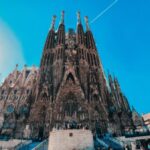 The Complete Guide: Sagrada Familia in Barcelona - Finished Date, History and Must-See Attractions
The Complete Guide: Sagrada Familia in Barcelona - Finished Date, History and Must-See Attractions- Light and Color: The stained glass windows are designed to illuminate the space with vibrant hues, symbolizing the presence of the Holy Spirit.
- Natural Elements: The columns resembling trees evoke the idea of a sacred forest, creating a serene atmosphere conducive to prayer and meditation.
- Community and Faith: The ongoing construction symbolizes the continuous journey of faith, involving countless individuals who contribute to its completion.
Ultimately, the Sagrada Familia serves not only as a physical structure but also as a spiritual sanctuary. Its ongoing construction reflects the evolving nature of faith, inviting each visitor to engage in a dialogue with their beliefs. In this sacred space, one can find moments of peace and introspection, making it a truly transformative experience for those who seek a deeper connection with their spirituality.
A Guide to Visiting the Sagrada Familia: Tips and Tricks
Visiting the Sagrada Familia can be an overwhelming experience due to its immense popularity. To make the most of your trip, consider purchasing your tickets online in advance to avoid long queues. This will give you more time to explore the breathtaking architecture and stunning interiors without the hassle of waiting.
When planning your visit, take note of the best times to go. Early mornings or late afternoons tend to be less crowded, allowing for a more peaceful experience. Additionally, visiting on weekdays rather than weekends can help you avoid the peak tourist rush, giving you the chance to soak in the beauty of this magnificent temple.
- Plan Your Visit: Make a timetable to see both the interiors and exteriors, as each offers unique perspectives.
- Audio Guides: Consider renting an audio guide or joining a guided tour to gain insights into Gaudí's vision and the temple's symbolism.
- Dress Code: Remember to dress respectfully, as the Sagrada Familia is a place of worship.
Finally, don't forget to explore the surrounding area. The Sagrada Familia is located in a vibrant neighborhood with plenty of cafes, shops, and parks. Take some time to enjoy local cuisine or simply relax in one of the nearby green spaces, enhancing your overall experience in Barcelona.
The History Behind Sagrada Familia: From Gaudí's Vision to Reality
The history of the Sagrada Familia is as intricate as its architecture, beginning with the vision of Antoni Gaudí, who took over the project in 1883. His innovative approach combined Gothic and Art Nouveau styles, aiming to create a basilica that would reflect his deep religious beliefs and admiration for nature. Gaudí often stated that he was not an architect but a "worker in God's vineyard," emphasizing the spiritual purpose behind the structure.
Construction of the Sagrada Familia has been a collaborative effort spanning over a century, with various architects continuing Gaudí's legacy after his untimely death in 1926. The initial plan was ambitious, featuring 18 towers representing the Apostles, the Virgin Mary, and the four evangelists, along with the tallest tower dedicated to Jesus Christ. This ongoing endeavor has seen numerous technological advancements, allowing the project to evolve while still adhering to Gaudí's original vision.
Throughout the years, the Sagrada Familia has faced challenges, including financial constraints and interruptions due to the Spanish Civil War. Despite these setbacks, the project continued to attract funding and support from around the world. Today, it operates largely on ticket sales, which contributes to its construction and maintenance. This enduring commitment from both the community and visitors highlights its significance as a cultural and spiritual landmark.
As the Sagrada Familia approaches its anticipated completion in 2026, it stands as a monument to human perseverance and creativity. Each stone laid is a testament to the countless artisans, craftsmen, and volunteers who have dedicated their skills to this magnificent temple. A visit to the Sagrada Familia offers not only a glimpse into Gaudí's genius but also a journey through the rich tapestry of history that has shaped this iconic site.
Understanding the Symbolism of Sagrada Familia's Design Elements
The design elements of the Sagrada Familia are rich in symbolism, reflecting both Gaudí's artistic vision and spiritual beliefs. For instance, the use of natural forms is prevalent, as many aspects of the basilica resonate with the organic structure of trees. The columns, reminiscent of trunks and branches, create an atmosphere of walking through a sacred forest, inviting visitors to experience nature's beauty in a spiritual context.
In addition to natural elements, the facades of the Sagrada Familia depict profound theological concepts. The Nativity facade encapsulates the joy of Christ's birth through intricate scenes, while the Passion facade starkly illustrates His crucifixion, serving as a powerful reminder of sacrifice. This juxtaposition emphasizes the duality of joy and suffering, inviting contemplation on the cycle of life and faith.
The play of light and color within the basilica further enhances its spiritual ambiance. The stained glass windows are strategically designed to filter sunlight, creating a vibrant spectrum that shifts throughout the day. This use of light symbolizes the presence of the Holy Spirit and enhances the worship experience, encouraging visitors to reflect on their connection to the divine.
Finally, Gaudí's incorporation of numbers and geometry into the design adds another layer of meaning. The use of Fibonacci sequences and other mathematical principles reflects the harmony of the universe and God's creation, suggesting that beauty and divinity are intertwined. This mathematical elegance not only enriches the aesthetic of the Sagrada Familia but also serves as a testament to Gaudí's belief in the sacred order of the world.
Why Sagrada Familia is a UNESCO World Heritage Site and Must-Visit Destination
The Sagrada Familia is recognized as a UNESCO World Heritage Site due to its extraordinary architectural significance and cultural value. This basilica embodies the innovative spirit of Antoni Gaudí, who masterfully blended Gothic and Art Nouveau styles to create a unique expression of faith. The intricate details found in its design showcase a harmonious relationship between nature and spirituality, making it a pivotal example of architectural genius that transcends time.
Moreover, the Sagrada Familia stands out because of its dedication to the Holy Family and the profound symbolism embedded within its structure. The basilica is designed to inspire visitors, guiding them through narratives of Christian faith reflected in its facades. Each sculptural detail invites contemplation, which is essential for a site that serves both as a place of worship and a cultural landmark.
- Cultural Impact: The Sagrada Familia draws millions of tourists each year, contributing to Barcelona's economy and global cultural standing.
- Artistic Collaboration: The ongoing construction involves artisans from around the world, emphasizing the collaborative aspect of its creation.
- Architectural Innovation: Gaudí’s use of geometry and organic forms continues to influence modern architecture, making it a study subject for architects and students alike.
In essence, visiting the Sagrada Familia is not just about witnessing an architectural masterpiece; it is about experiencing a living heritage that continues to evolve. Its status as a UNESCO World Heritage Site underscores the importance of preserving such sites for future generations, ensuring that the legacy of human creativity and devotion endures.
If you want to know other articles similar to The Magnificent Temple of Sagrada Familia: A Must-Visit in Barcelona you can visit the category WHERE YOU CAN GO.
Deja una respuesta

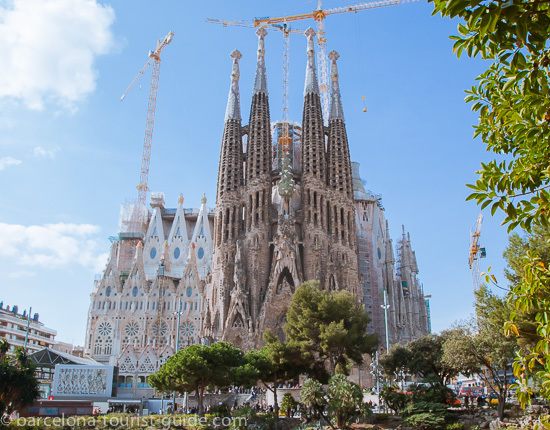
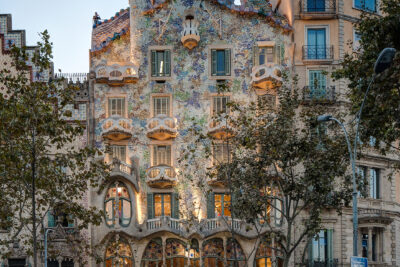
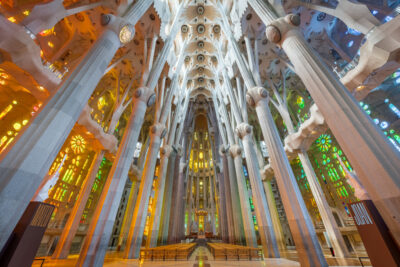
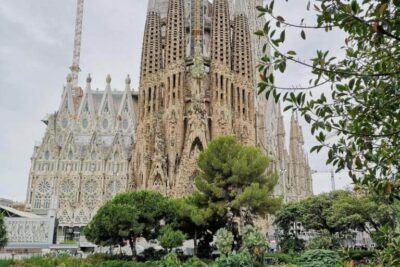
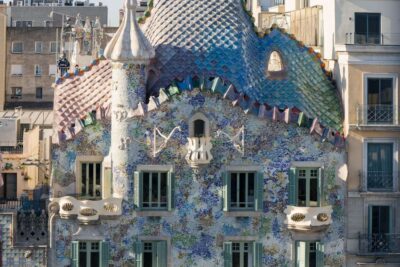
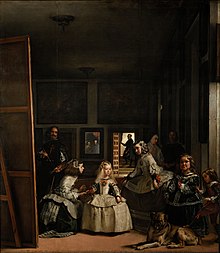
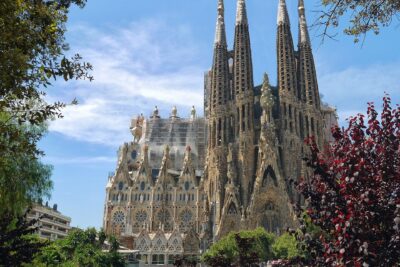
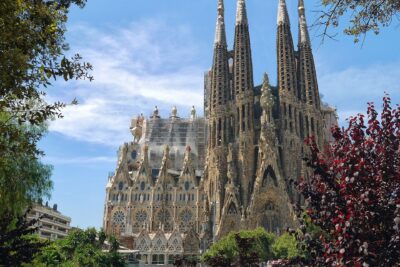
Read more!